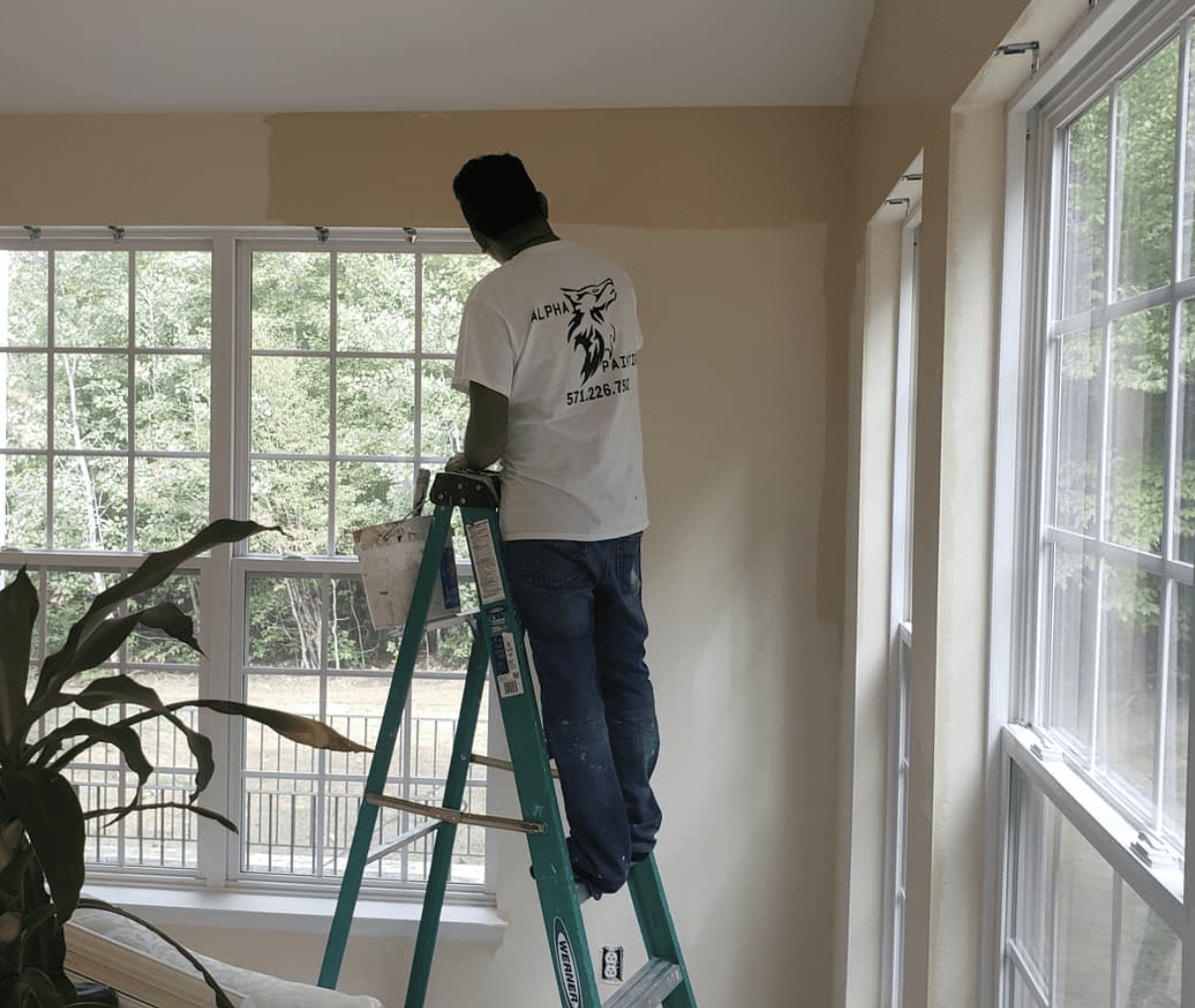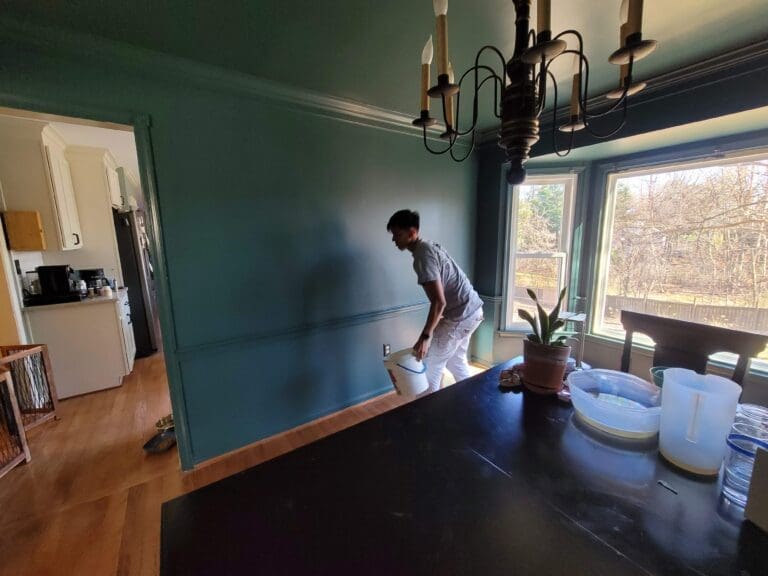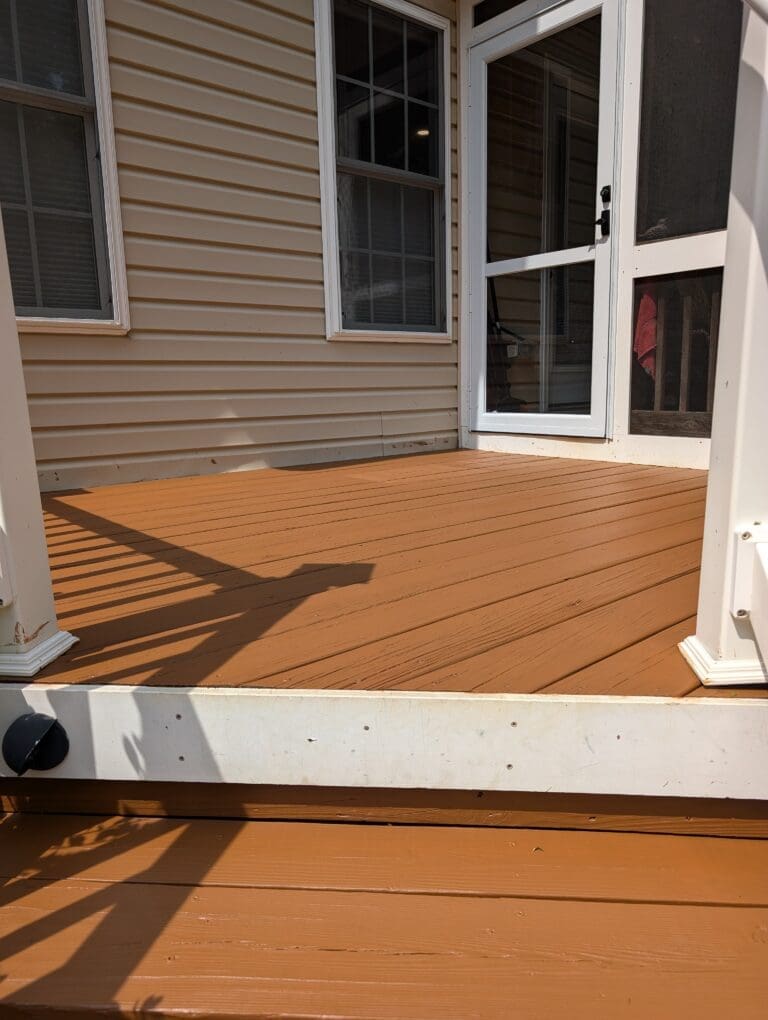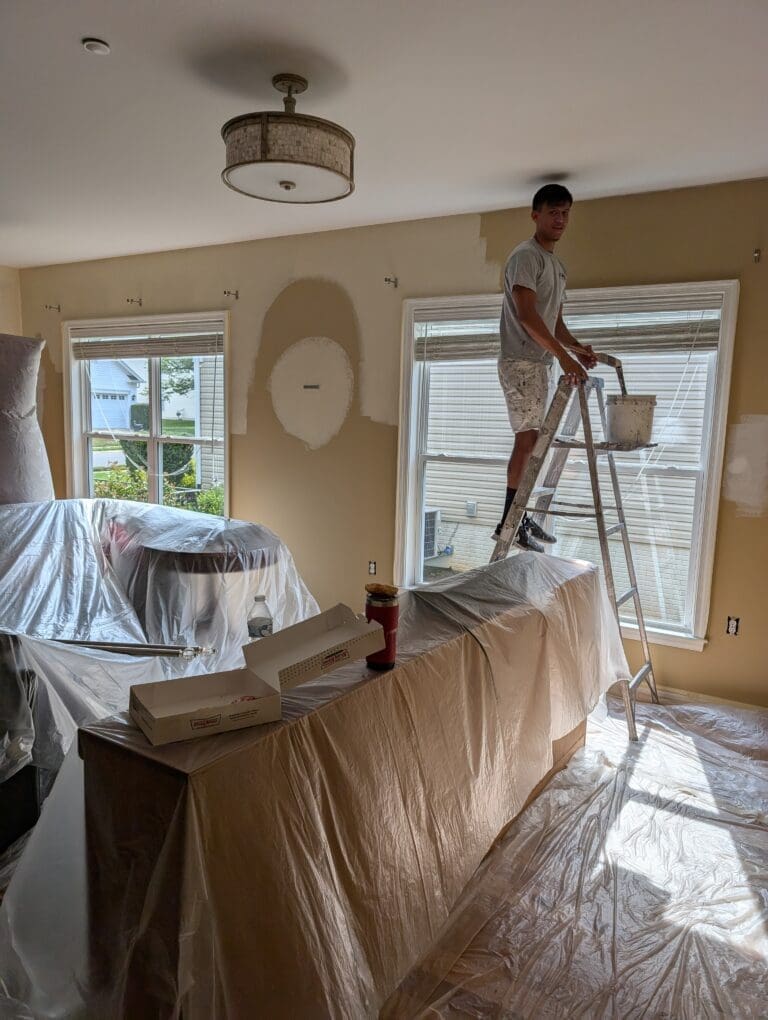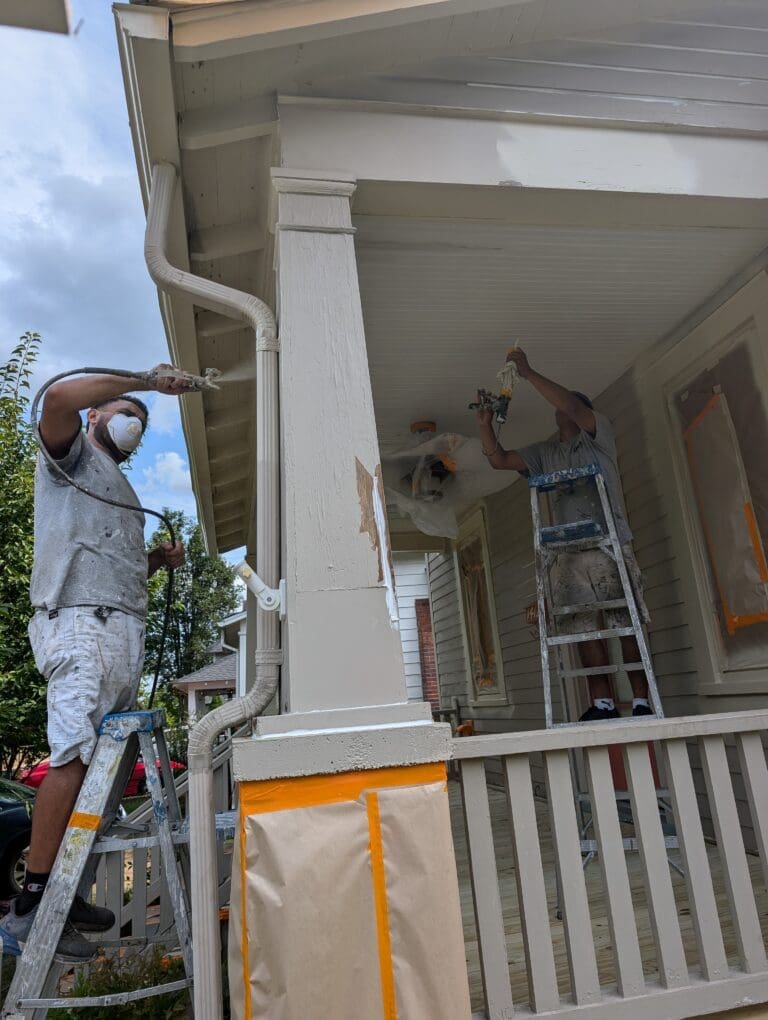Lead-Safe Painting: Why Hiring Certified Pros Matters for Richmond-era Homes
Richmond, VA is full of historic charm, with homes that showcase architectural styles from the late 19th and early 20th centuries. These properties carry unique character, but many also bring hidden risks when it comes to renovation and painting. One of the most serious hazards is lead-based paint, which was commonly used in homes built before 1978.
Homeowners considering updates—whether a fresh exterior coat, interior wall restoration, or trim refinishing—must take lead safety seriously. Choosing a contractor who is EPA Lead-Safe Certified isn’t just about compliance with regulations; it’s about protecting your health, preserving your property, and ensuring the job is done to professional standards. At Alpha Painting, our team is trained and certified in lead-safe practices, providing peace of mind for families and business owners across Fredericksburg and surrounding areas.
Table of Contents
Why Lead Paint Still Matters in Richmond
The use of lead-based paint was banned in residential properties in 1978, but that doesn’t mean the issue has disappeared. In Richmond, countless homes were constructed decades earlier, and many still contain original layers of paint beneath newer finishes.
Old trim, doors, windows, siding, and interior walls often harbor lead-based coatings. Once these surfaces begin to deteriorate—chipping, peeling, or chalking—the risk of lead exposure grows. The fine dust created when scraping or sanding lead paint is especially dangerous because it can be inhaled or settle on household surfaces where children and pets are most vulnerable.
Richmond’s aging housing stock makes it far more likely that homeowners will encounter this risk during routine renovations. Painting may seem simple, but without the right precautions, it can turn into a serious health hazard.
Health Risks of Lead Exposure
Lead is a neurotoxin, meaning it directly affects the nervous system. Small amounts of exposure can have long-lasting consequences, particularly for children. Developmental delays, learning difficulties, behavioral issues, and lowered IQ are all linked to lead poisoning. Pregnant women are also at significant risk, since exposure can harm both mother and unborn child.
Adults can suffer from elevated blood pressure, kidney damage, and neurological issues when exposed to lead dust over time. The danger is that these symptoms often develop slowly, making it difficult to immediately connect them to a renovation project that wasn’t handled properly.
What makes the problem especially concerning in older Richmond homes is that lead dust is invisible. A room may look spotless after a paint job, but without containment, cleanup, and proper safety procedures, microscopic particles remain behind, posing risks long after the project is finished.
The Role of Certified Lead-Safe Painters
Not every painter is trained to handle lead. In fact, many homeowners assume that all professionals know how to work safely in older homes, but that isn’t always true. The EPA’s Renovation, Repair and Painting (RRP) Rule requires contractors who disturb lead-based paint in homes built before 1978 to be certified and follow strict safety standards.
Certified painters use specialized methods to reduce lead hazards, such as:
- Containing the work area with plastic sheeting and barriers to prevent dust from spreading.
- Using HEPA vacuums and wet sanding techniques instead of dry scraping or sanding.
- Wearing protective gear to limit exposure.
- Performing a thorough cleanup and disposal process in compliance with regulations.
These procedures aren’t optional add-ons; they are essential steps that protect families, workers, and neighbors. A certified contractor also maintains documentation, ensuring compliance with EPA guidelines and protecting homeowners from potential fines if regulations are ignored.
Why Richmond Homes Require Extra Care
Richmond’s housing history adds complexity to painting projects. Many homes feature layers of old paint beneath decorative woodwork, original siding, or plaster walls. Unlike newer construction, these surfaces can’t be approached with a quick sanding or pressure wash.
Windows, in particular, pose challenges because friction from opening and closing painted sashes releases lead dust into the air. Doorframes and stair railings are other high-risk areas where lead exposure is more likely because of daily use and wear.
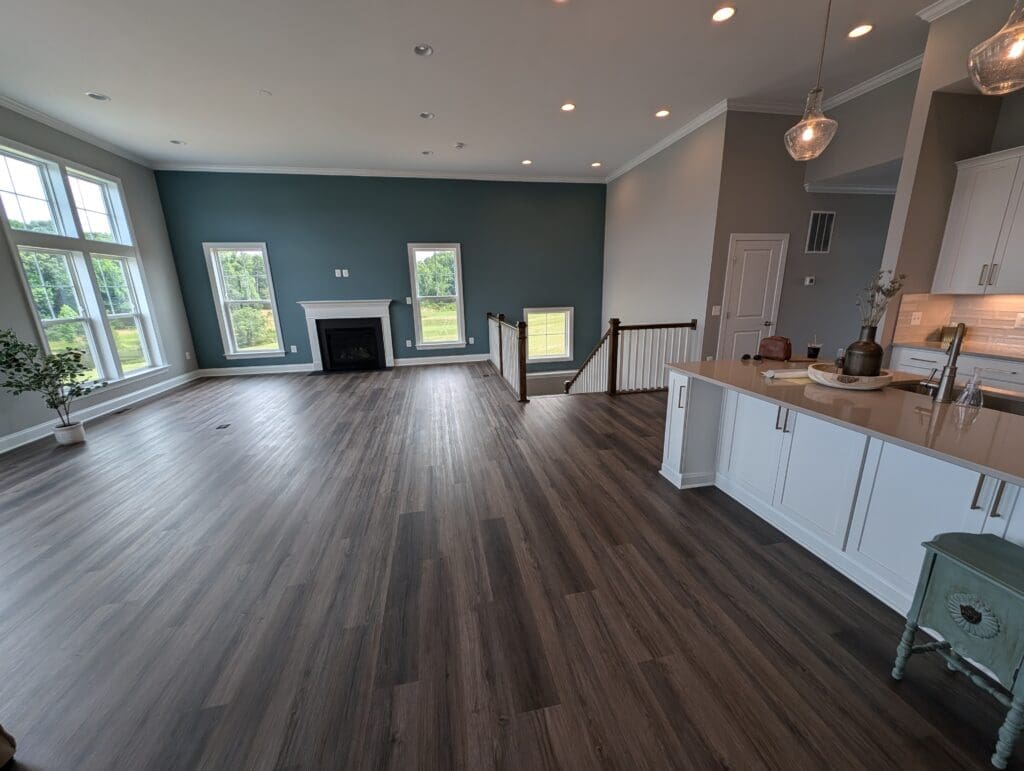
Exterior projects also demand special caution. Chipping lead paint on siding or porches can contaminate soil, making outdoor spaces unsafe for gardening or play. Once in the ground, lead can linger for decades, exposing children and pets every time they step into the yard. Certified painters account for these conditions and plan projects accordingly, ensuring containment not just inside the home but also around the property.
Legal and Financial Considerations
Lead-safe practices aren’t only about health; they are also about liability. Homeowners who hire uncertified painters run the risk of non-compliance with federal law if lead-based paint is disturbed improperly. If contamination occurs, remediation can become expensive, sometimes costing far more than the original painting project.
Additionally, failure to follow proper protocols could complicate future real estate transactions. Buyers, inspectors, and lenders are increasingly cautious about homes with lead paint issues. A property where safety documentation is lacking may face reduced value or delayed closings.
By hiring a certified professional, homeowners protect both their family and their investment, ensuring any work done on their Richmond-era home meets current safety and regulatory standards.
Modern Solutions Without Compromising Tradition
Historic homes carry unique beauty that many homeowners want to preserve. Lead-safe painting doesn’t mean stripping away that character; it means restoring it responsibly. Skilled painters use methods that highlight original craftsmanship while maintaining a safe environment.
For interiors, this might involve careful surface preparation and applying fresh coats that complement the home’s historic style. On exteriors, protective primers and high-quality paints extend the life of original siding and trim while keeping the home true to its period design.
The goal is never to erase history but to safeguard it. A lead-safe approach ensures that restoration honors the home’s past while protecting its future occupants.
How Homeowners Can Prepare
While certified professionals handle the technical aspects, homeowners can take steps to prepare for a lead-safe project. Clearing furniture, personal items, and rugs from the work area makes it easier for contractors to establish containment. Understanding the process also helps set expectations, since lead-safe painting often takes more time than standard projects.
Families with young children or pets should consider temporary relocation during large-scale renovations. Certified contractors will communicate about potential risks and the necessary precautions, but planning ahead ensures minimal disruption.
Homeowners should also ask questions before the work begins. A reputable contractor will provide proof of certification, explain containment strategies, and outline how cleanup will be handled. Transparency builds trust and demonstrates a commitment to safety.
The Long-Term Value of Safe Practices
Lead-safe painting is an investment in health, property value, and peace of mind. When done correctly, it eliminates hidden hazards, preserves the integrity of historic structures, and ensures compliance with federal law.
Richmond’s historic homes deserve careful attention, and painting them requires more than skill with a brush. Certified professionals combine craftsmanship with safety, delivering results that last while keeping families protected.
Closing Thought
Painting an older Richmond home is more than a cosmetic update—it’s a responsibility. Hiring an EPA Lead-Safe Certified painter means choosing safety, compliance, and respect for the history your property represents. The risks of cutting corners are too great, both for health and for the preservation of these treasured homes. With the right expertise, homeowners can enjoy fresh, beautiful finishes without sacrificing safety or tradition.

